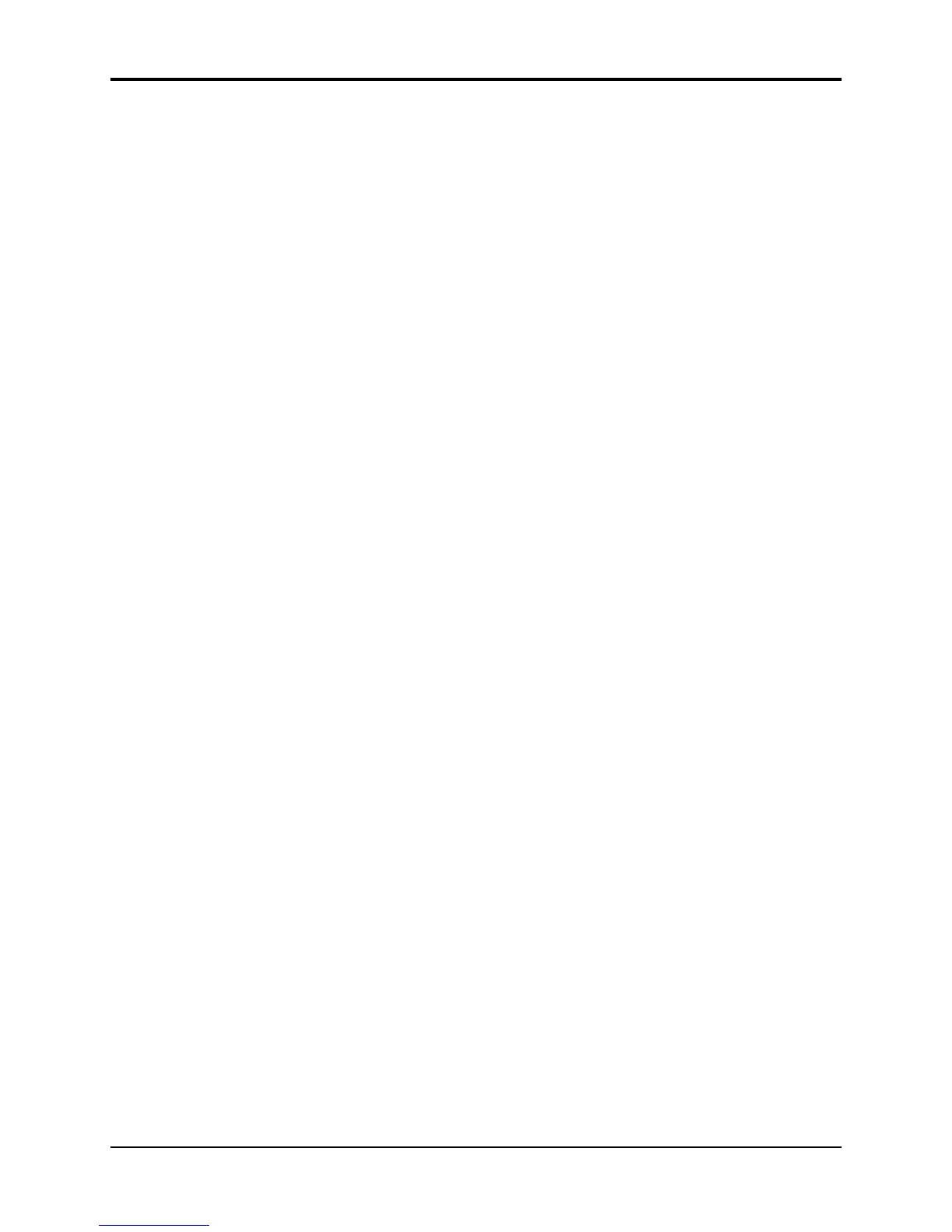Section 7 — Effect Parameters TS-10 Musician’s Manual
14
A- -REVRB Range: 00 to 99
Controls the amount of Effect A (DDL) being sent into the reverb. This would allow you to add
reverb to voices assigned to FX1 and panned hard left, without having to add any of the rotary
speaker effect.
FX2- -REVRB PAN
DRY DDL REGEN L
DDL MIX DAMPING
LEVEL DELAY TIME L and R
For a complete description of these parameters, refer to the DDL+CHORUS+REV algorithm
found earlier in this section.
ROTO STEREO Range: OFF or ON
Selects either a stereo or mono rotary speaker effect.
LEVEL Range: 00 to 99
Adjusts the volume of the rotary speaker signal. A level of 00 will offer no audible signal.
PAN Range: -99 to +99
Determines the location of the rotary speaker signal in the stereo spectrum. A value of -99 is
panned hard left, and +99 is hard right.
AM DEPTH Range: 00 to 99
Controls how much the volume will fade away as the speaker rotates away from the listener.
Higher values will create a deeper rotating speaker effect.
FM DEPTH Range: 00 to 99
Controls the amount of detuning applied to the rotating speaker. This can be used to create a
“doppler” effect.
ROTO SLOW Range: 00 to 99
Determines the rate of the rotary speaker when in the “Slow” setting. ROTO SLOW determines
the manual level for the rotary speaker rate when SPEED= SLOW, or when the selected
modulator is at zero output level. Again, the higher the value, the faster the rate.
FAST Range: 00 to 99
Determines the rate of the rotary speaker when in the “Fast” setting. The higher the value, the
faster the rate.
INERTIA Range: 00 to 99
Determines how long it will take for the rotor effect to speed up and slow down after switching
from fast to slow or vice versa. Adjust this parameter to simulate the effect of the rotary speaker
gradually picking up speed.
SPEED Range: SLOW or FAST
Determines how the rotary speaker will switch between slow and fast speeds. The behavior of
the switch accurately reflects an actual rotary speaker, taking time to speed up or slow down,
based on the value of the INERTIA parameter (see previous description). Any effect modulator
can act as the SPEED controller. How the modulators will switch the rotor speed fall into two
categories:
• WHEEL, PBEND, PEDAL, TIMBR, XCTRL, PRESS, KEYBD, and VELOC — These modulation
sources act like a switch to turn on or off the fast rotor speed. To reverse the polarity of the
switch, set ROTOR SLOW faster than ROTOR FAST.
